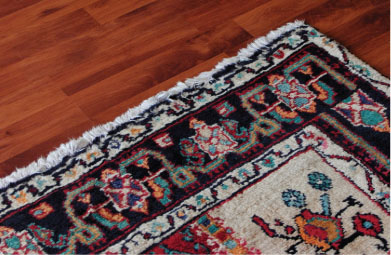 An adjuster was presented with a water-damage claim involving what was described as an antique 10-by-13-foot Heriz Rug valued at $25,000. The water damage caused the colors to run, rendering the Persian rug a total loss, according to the insured's claim.
An adjuster was presented with a water-damage claim involving what was described as an antique 10-by-13-foot Heriz Rug valued at $25,000. The water damage caused the colors to run, rendering the Persian rug a total loss, according to the insured's claim.
The owner provided the adjuster with the provenance of having inherited this early-20th-century rug from a family member. The owner also provided documentation of having spent several thousand dollars restoring the rug to what was described as “pristine” condition.
Initial online research supported the $25,000 claim. Nonetheless, the adjuster had some reservations about whether or not the rug was a total loss and called in a contents-claims specialist to consult on the case.
Recommended For You
Want to continue reading?
Become a Free PropertyCasualty360 Digital Reader
Your access to unlimited PropertyCasualty360 content isn’t changing.
Once you are an ALM digital member, you’ll receive:
- Breaking insurance news and analysis, on-site and via our newsletters and custom alerts
- Weekly Insurance Speak podcast featuring exclusive interviews with industry leaders
- Educational webcasts, white papers, and ebooks from industry thought leaders
- Critical converage of the employee benefits and financial advisory markets on our other ALM sites, BenefitsPRO and ThinkAdvisor
Already have an account? Sign In Now
© 2025 ALM Global, LLC, All Rights Reserved. Request academic re-use from www.copyright.com. All other uses, submit a request to [email protected]. For more information visit Asset & Logo Licensing.





